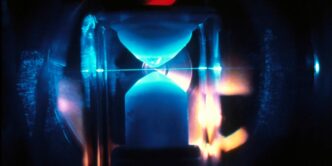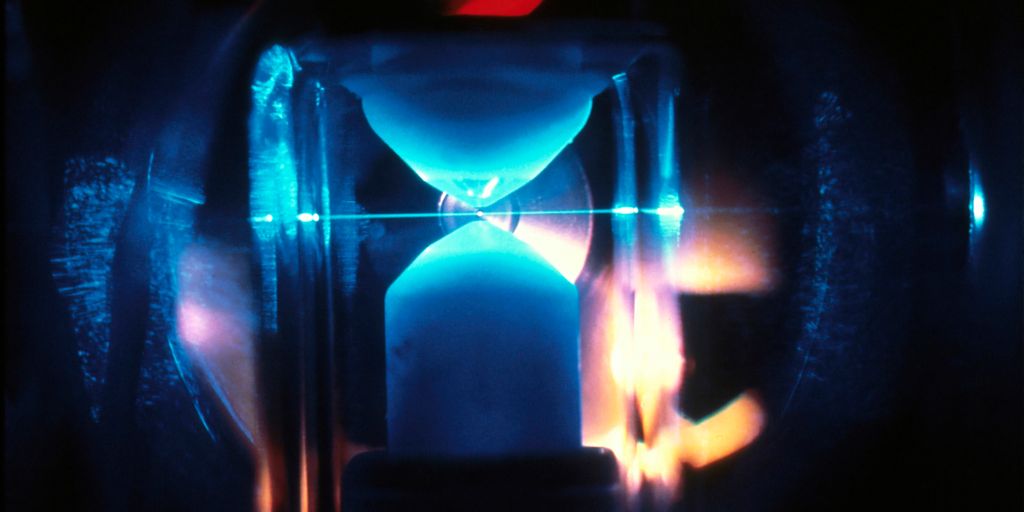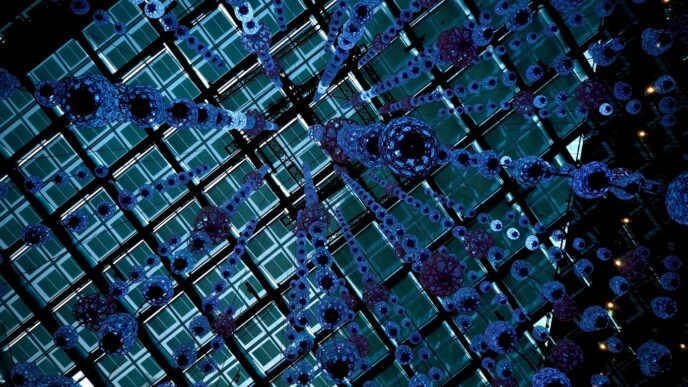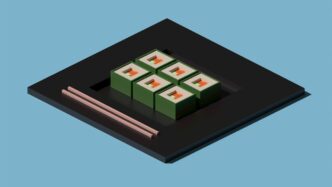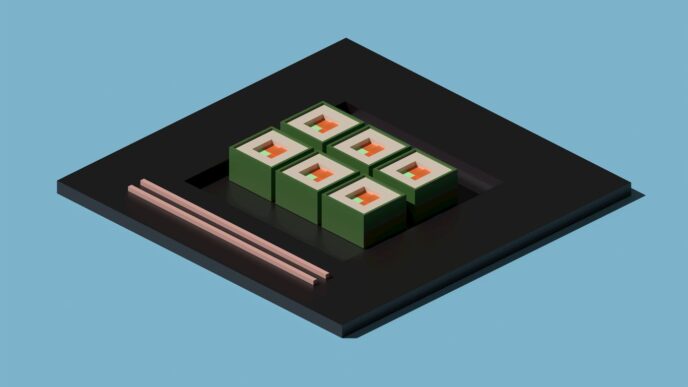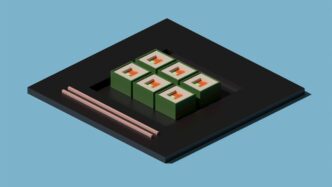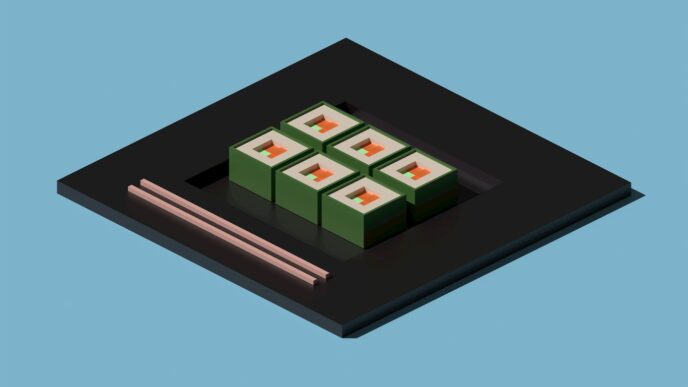So, you’ve probably heard about quantum computers, these super-powerful machines that could change everything. But have you ever wondered why they need to be kept so incredibly cold? It’s not just for dramatic effect, like you see in the movies. The truth is, the way quantum computers work relies on some really delicate quantum states, and temperature plays a huge role in keeping those states stable. Think of it like trying to balance a pencil on its tip – a little nudge and it falls over. For quantum computers, that nudge can be heat. So, let’s break down why these futuristic machines need to live in a super-cold environment.
Key Takeaways
- Quantum computers need extreme cold because their basic units, qubits, are super sensitive. Heat causes them to lose their special quantum properties, like superposition, which is needed for calculations.
- Keeping quantum computers near absolute zero helps minimize “decoherence,” which is when outside influences like heat or electromagnetic noise mess up the qubits’ states.
- For some types of quantum computers, especially those using superconducting qubits, very low temperatures are also necessary to achieve superconductivity, allowing electricity to flow without resistance.
- While most quantum computers need temperatures close to absolute zero (around -273.15°C or 0 Kelvin), the exact cooling needs can differ depending on the specific technology used for the qubits.
- Achieving and maintaining these ultra-low temperatures is a big challenge, requiring complex and expensive cooling systems like dilution refrigerators, and even new innovations are being developed to improve the process.
The Crucial Role of Extreme Cold in Quantum Computing

So, why all the fuss about making quantum computers super, super cold? It really boils down to how these machines work, which is pretty different from your laptop. Instead of regular bits that are either a 0 or a 1, quantum computers use "qubits." These qubits are like tiny, quantum-mechanical chameleons; they can be a 0, a 1, or, get this, a mix of both at the same time. This is called superposition, and it’s what gives quantum computers their potential power.
Understanding Quantum Superposition and Coherence
Think of superposition like a spinning coin before it lands. It’s not heads, it’s not tails, it’s kind of both until it settles. Qubits can do something similar, holding multiple possibilities at once. This ability is key to solving problems that are way too tough for even the best regular computers. But here’s the catch: this quantum state is incredibly fragile. It’s like trying to balance a feather on your fingertip – the slightest nudge can knock it over. That’s where "coherence" comes in. Coherence is basically how long a qubit can maintain its fancy superposition state before it gets messed up. The longer it stays coherent, the more calculations it can do.
Minimizing Thermal Energy for Stable Qubits
Now, imagine you’re trying to balance that feather, but the air around you is constantly gusting. That’s what heat does to qubits. Heat is just energy, and that energy makes atoms and particles jiggle and vibrate. When qubits are exposed to this thermal jiggling, their delicate quantum states get disrupted. It’s like trying to listen to a whisper in a noisy room. The warmer it is, the more
Why Quantum Computers Demand Near-Absolute Zero Temperatures
So, why all the fuss about making quantum computers super, super cold? It really boils down to how these machines work, which is pretty different from your laptop. They use something called qubits, and these qubits are like the building blocks of quantum information. Unlike regular computer bits that are either a 0 or a 1, qubits can be both at the same time – that’s superposition. It’s a neat trick that lets quantum computers tackle problems regular computers can’t even dream of.
Preserving Fragile Quantum States
But here’s the catch: qubits are incredibly sensitive. Think of them like a soap bubble – easily popped. Any little disturbance from the outside world, like heat or stray signals, can mess up their quantum state. This is called decoherence, and it’s the enemy of quantum computing. To stop this from happening, we need to create an environment that’s as quiet and stable as possible.
Reducing Environmental Interactions and Noise
This is where the extreme cold comes in. At higher temperatures, everything is buzzing with energy. Atoms and particles are jiggling around, creating vibrations and electromagnetic noise. This constant activity is like a loud party happening right next to your delicate qubits, making it impossible for them to do their job. By cooling the system down to temperatures close to absolute zero (that’s -273.15 degrees Celsius, or zero Kelvin), we drastically cut down on this thermal energy.
- Less Jiggling: Atoms and molecules move much slower at very low temperatures.
- Fewer Spontaneous Flips: This reduced movement means less energy is flying around, which stops qubits from randomly flipping their states.
- Quieter Environment: It minimizes interference from background radiation and other environmental factors that can corrupt quantum information.
The Impact of Thermal Vibrations on Qubit Accuracy
Imagine trying to read a book in a hurricane. That’s kind of what happens to qubits at room temperature. The thermal vibrations are so strong they can easily push a qubit from one state to another, introducing errors. For example, if a qubit is supposed to represent a ‘0’ with a specific energy level, thermal energy can give it a little nudge, accidentally turning it into a ‘1’.
| Temperature Range | Qubit Stability | Error Rate |
|---|---|---|
| Room Temperature | Low | High |
| Near Absolute Zero | Very High | Very Low |
By getting close to absolute zero, we make these vibrations almost disappear. This allows the qubits to stay in their intended states much longer, making the whole computation process far more reliable and accurate. It’s all about creating that super-still, super-quiet environment for the quantum magic to happen.
How Ultra-Low Temperatures Enhance Quantum Computation
So, why all the fuss about making quantum computers colder than a polar bear’s picnic? It all comes down to keeping those tiny quantum bits, or qubits, in a good mood. Think of qubits like really sensitive musicians trying to play a complex symphony. If the room is too noisy or shaky, they can’t hit the right notes, and the whole performance goes wrong. That’s what heat does to qubits – it makes them jittery and prone to errors.
Achieving Ground State for Qubit Initialization
Before a quantum computer can even start crunching numbers, its qubits need to be set up correctly. This means getting them into their lowest possible energy state, often called the ‘ground state’. It’s like making sure all the musicians are sitting quietly and ready before the conductor raises their baton. For many types of qubits, especially those made from superconducting circuits, this ground state is only reliably accessible at temperatures incredibly close to absolute zero. If they’re too warm, they might be in a slightly higher energy state, which messes up the starting point of any calculation.
Extending Qubit Coherence Times
Qubits have this amazing ability called ‘superposition’, where they can be both 0 and 1 at the same time. But this state is super fragile. Any little bit of environmental interference – like stray heat or electromagnetic waves – can knock them out of superposition, a process called decoherence. The colder it is, the less ‘noise’ there is in the system. This means qubits can stay in their delicate quantum states for much longer, giving the computer more time to perform calculations before errors creep in. We’re talking about going from fractions of a second to potentially much longer, which is a huge deal for doing anything useful.
Minimizing Spontaneous Flipping of Qubit States
Even when not actively being worked on, qubits can spontaneously flip their state from 0 to 1 or vice versa due to thermal energy. This is like a musician accidentally hitting a wrong note when they’re just resting. At extremely low temperatures, the amount of thermal energy available to cause these spontaneous flips is drastically reduced. This stability is key to preventing random errors that would otherwise corrupt the computation. It’s all about creating a calm, stable environment where the qubits can just do their job without unwanted interruptions.
The Science Behind Quantum Computer Cooling
So, how do we actually get these quantum computers down to the super-chilly temperatures they need? It’s not like popping them in your home freezer, that’s for sure. The main players in this cooling game are specialized machines called dilution refrigerators. Think of them as super-powered, multi-stage coolers that work by using a mix of helium-3 and helium-4 isotopes.
These refrigerators are pretty complex. They have several stages, each getting progressively colder. The process starts with pre-cooling using liquid nitrogen or a regular refrigerator, then moves to colder stages using the helium isotopes. The magic happens in the ‘mixing chamber’ where the helium-3 and helium-4 separate, absorbing heat and driving the temperature down. The goal is to get as close to absolute zero (0 Kelvin or -273.15°C) as possible. We’re talking temperatures around 10 to 100 millikelvins, which is colder than outer space!
Getting to these temperatures is a real engineering feat. It requires careful design to minimize heat leaks from the outside world. Even a tiny amount of heat can mess things up for the super-sensitive qubits. So, there’s a lot of work going into making these cooling systems more efficient and reliable.
Here’s a quick look at how the cooling stages typically work:
- Pre-cooling: Initial cooling using standard refrigeration or liquid nitrogen.
- Cold Stages: Using helium-3 and helium-4 mixtures to reach millikelvin temperatures.
- Mixing Chamber: The core component where heat is absorbed through isotope separation.
There’s also ongoing research into new cooling technologies, like chip-scale refrigerators, that could make the process more compact and potentially more effective for future quantum computers.
Temperature Sensitivity Across Quantum Computing Modalities
So, not all quantum computers are built the same, and that means their cooling needs can be a bit different too. It’s not just a one-size-fits-all situation. While the image of a quantum computer shivering in a fridge near absolute zero is common, especially for certain types, other approaches have their own temperature considerations.
Cooling Requirements for Superconducting Qubits
This is where the really, really cold temperatures come in. Superconducting qubits, the kind you hear about from big players like Google and IBM, need to be kept super chilly, often just a hair above absolute zero (think millikelvins). Why so cold? Because these qubits are made from superconducting materials. For a material to superconduct – meaning it conducts electricity with zero resistance – it has to be incredibly cold. This lack of resistance is key for the qubits to maintain their delicate quantum states without losing energy. Any warmth would mess with the superconductivity and, by extension, the qubit’s ability to hold its quantum information.
Cooling Needs for Photonic Qubits
Now, photonic qubits are a bit of a different story. These use photons, or particles of light, to carry quantum information. Because photons don’t interact with their surroundings as much as, say, electrons in a wire, they’re naturally a bit more robust against noise. This means they don’t always need the extreme cold that superconducting qubits do. However, there’s a catch. Detecting single photons, which is necessary for reading out the quantum information, often requires special detectors that work best at low temperatures. Some sources that create these photons also need cooling, sometimes to around 4 to 10 Kelvin. So, while not as extreme as millikelvins, it’s still definitely cold, just not that cold.
Variations in Cooling for Trapped Ion and Topological Qubits
Trapped ion qubits are another approach. Here, individual atoms are held in place using electromagnetic fields, and their quantum states are manipulated. These systems generally don’t need the same level of extreme cold as superconducting ones. While keeping them cool helps reduce unwanted interactions and improve control, they can often operate at temperatures that are still quite cold, but perhaps in the Kelvin range rather than millikelvins. Topological qubits are a bit more theoretical right now, but the idea is that their quantum information is encoded in a way that makes it naturally resistant to errors. If this holds up, they might require less extreme cooling than other types, though precise temperature requirements are still an active area of research and development.
Challenges and Solutions in Maintaining Quantum Cold
Keeping quantum computers chilly is a big deal, but it’s not exactly a walk in the park. The equipment needed to get things down to those super-low temperatures, like dilution refrigerators, is pretty complex and costs a pretty penny. Plus, these quantum systems are really sensitive. Even tiny shifts in temperature, magnetic fields, or stray electrical signals can mess things up, leading to errors in calculations. As we try to build bigger quantum computers with more qubits, keeping everything at these extreme cold temperatures becomes even trickier. Scientists are constantly working on new ways to cool things down and make quantum systems more stable so they can handle these larger processors.
The Complexity and Cost of Cryogenic Equipment
The specialized gear required for quantum computing, particularly dilution refrigerators, is a major hurdle. These aren’t your average freezers; they’re intricate machines that use a mix of special helium isotopes to reach temperatures just fractions of a degree above absolute zero. Setting up and running this equipment demands a high level of technical skill and a significant financial investment. It’s a bit like trying to build a super-high-tech, ultra-cold laboratory from scratch.
Scaling Up Cooling for Larger Quantum Processors
As quantum computers grow in size, meaning they have more qubits, the cooling challenge gets bigger too. Imagine trying to keep a whole stadium cold when you’re used to cooling just a small room. More qubits mean more components that need to be kept at these incredibly low temperatures, and distributing that cold evenly and efficiently becomes a much harder task. It’s a bit like trying to keep a large pizza evenly warm – the edges can get cold before the center is done.
Ensuring Stability Against External Fluctuations
Quantum systems are like a finely tuned instrument; they’re easily disturbed. Even minor changes in the surrounding environment – like vibrations from nearby machinery, stray electromagnetic waves, or even slight temperature drifts – can disrupt the delicate quantum states of the qubits. This is why quantum computers are often housed in specially shielded rooms. The goal is to create an environment that is as quiet and stable as possible, minimizing any external interference that could lead to errors. It’s a constant battle to shield these sensitive machines from the noisy world around them.
So, Why All the Cold?
Ultimately, keeping quantum computers super cold is all about protecting those incredibly delicate quantum states. Think of it like trying to have a quiet conversation in a really loud room – the noise (heat, vibrations, stray signals) makes it impossible to hear what’s being said. By chilling everything down close to absolute zero, we drastically cut down on that environmental noise. This allows the qubits to stay in their special quantum states, like superposition, for much longer, which is exactly what we need for them to do all that amazing, complex math. While some quantum technologies might need less extreme cold than others, for many, especially those using superconducting qubits, this deep freeze is non-negotiable for them to work correctly and reliably. It’s a huge engineering challenge, for sure, but it’s a necessary step to unlock the true power of quantum computing.
Frequently Asked Questions
Why do quantum computers need to be so cold?
Quantum computers need to be super cold, close to absolute zero (which is -273.15°C or -459.67°F), to keep their special building blocks, called qubits, working correctly. Think of qubits like tiny spinning tops that can spin in many directions at once. Heat makes them wobble and lose their balance, messing up the calculations. Keeping them very cold stops this wobbling, allowing them to stay in their precise quantum states for longer.
How does cold help quantum computers avoid errors?
The main reason is to protect the qubits from getting disturbed by their surroundings. Heat causes atoms and particles to move around and vibrate. These tiny movements can easily knock a qubit out of its delicate quantum state, causing errors. By cooling everything down to near absolute zero, we minimize these vibrations and reduce the chances of errors, making the quantum computer more reliable.
Are there specific types of quantum computers that need extreme cold?
Most quantum computers use special materials that only work as superconductors (meaning they conduct electricity with zero resistance) at extremely low temperatures. Superconductivity is crucial for some types of qubits to maintain their quantum properties without losing energy. Without the extreme cold, these materials wouldn’t be superconducting, and the qubits wouldn’t function.
How cold do quantum computers actually get?
The most common type, called superconducting qubits, needs temperatures around 10 to 100 millikelvins. That’s about -273.15°C! This is much colder than outer space. Other types, like those using trapped ions or light (photons), might need less extreme cooling, but low temperatures are still generally important for them to work best.
What are the challenges in keeping quantum computers cold?
Cooling quantum computers is tricky and expensive! Special machines called dilution refrigerators are used, which are very complex and costly to build and run. Keeping these super-cold environments stable is also a challenge, as even small changes in temperature or other outside influences can disrupt the qubits. As computers get bigger, cooling them becomes even harder.
Are there any quantum computers that don’t need to be super cold?
Yes, some quantum computer designs, like those using light particles (photons) or trapped ions, don’t always need the same super-cold temperatures as superconducting ones. However, even these often require some level of cooling to improve performance and reduce errors. Scientists are also working on ways to make quantum computers work at warmer temperatures in the future.

